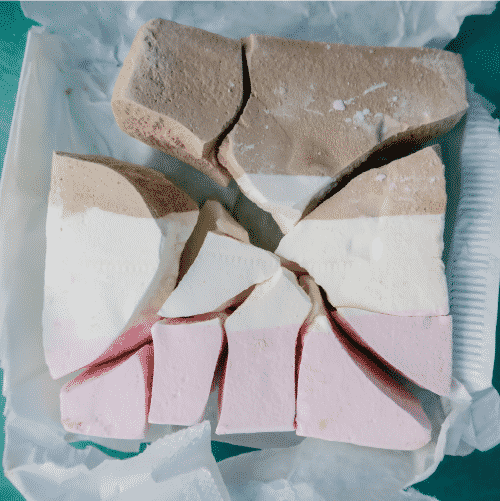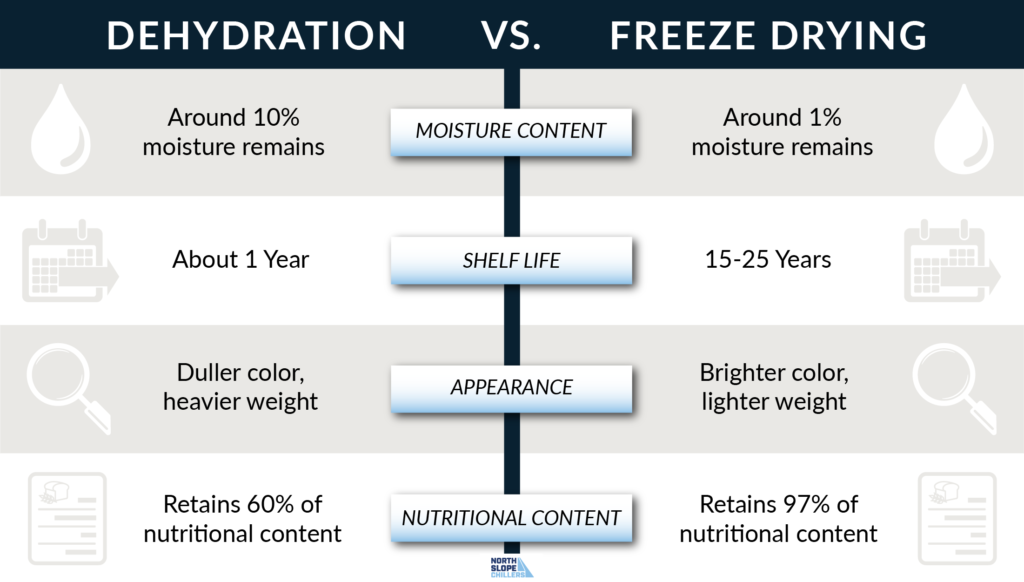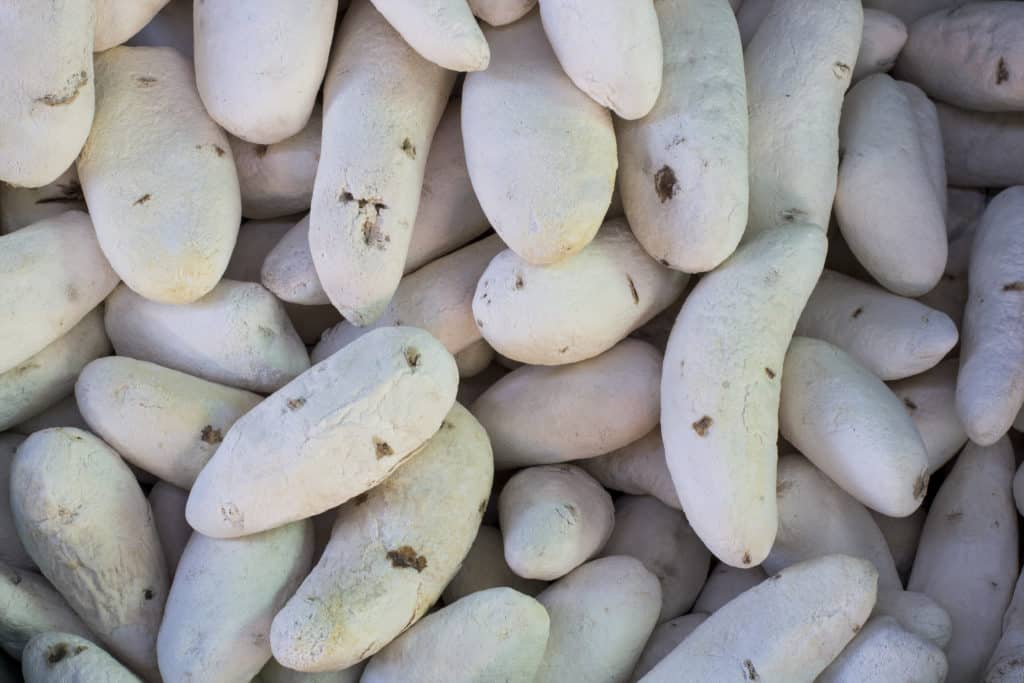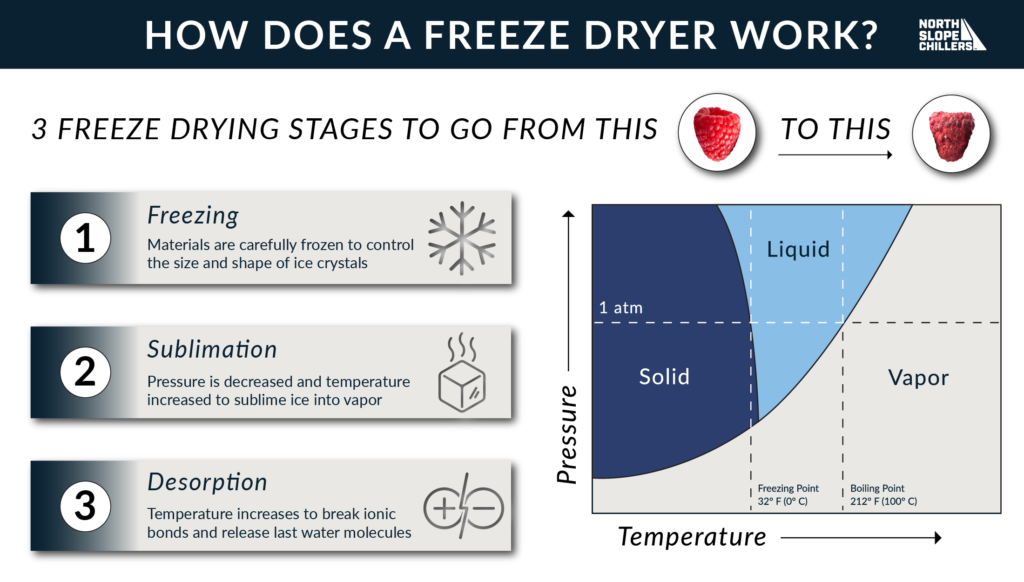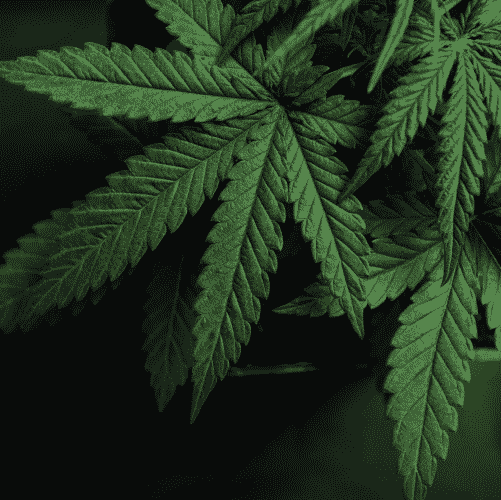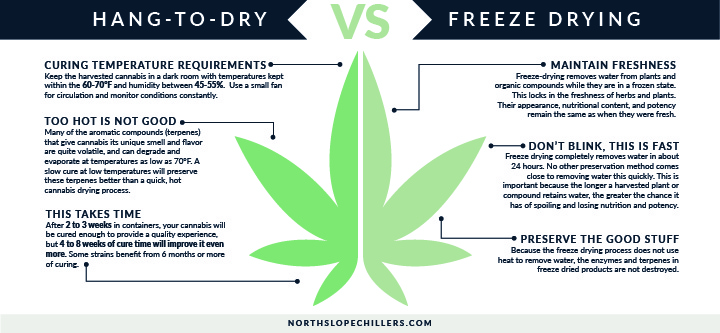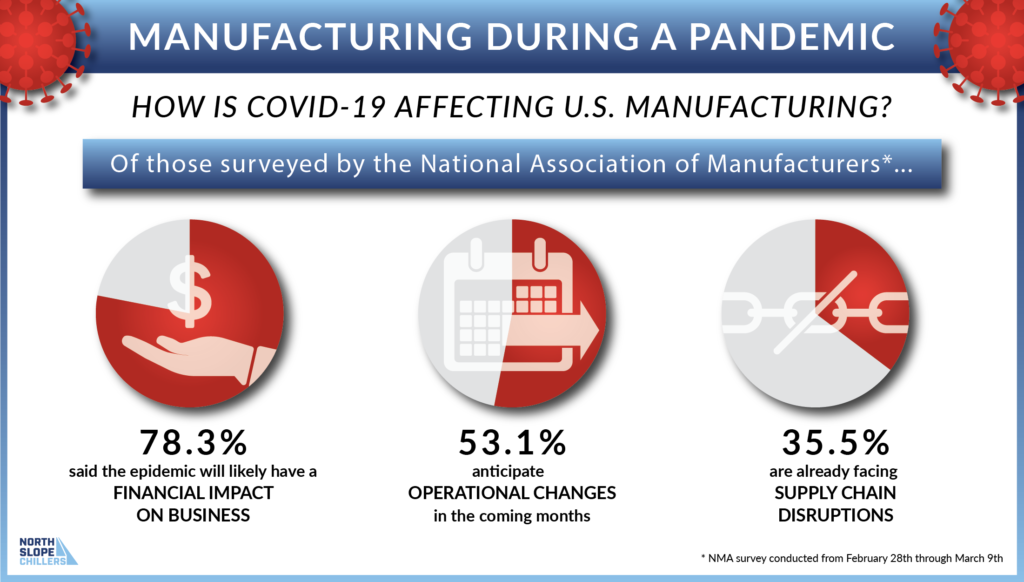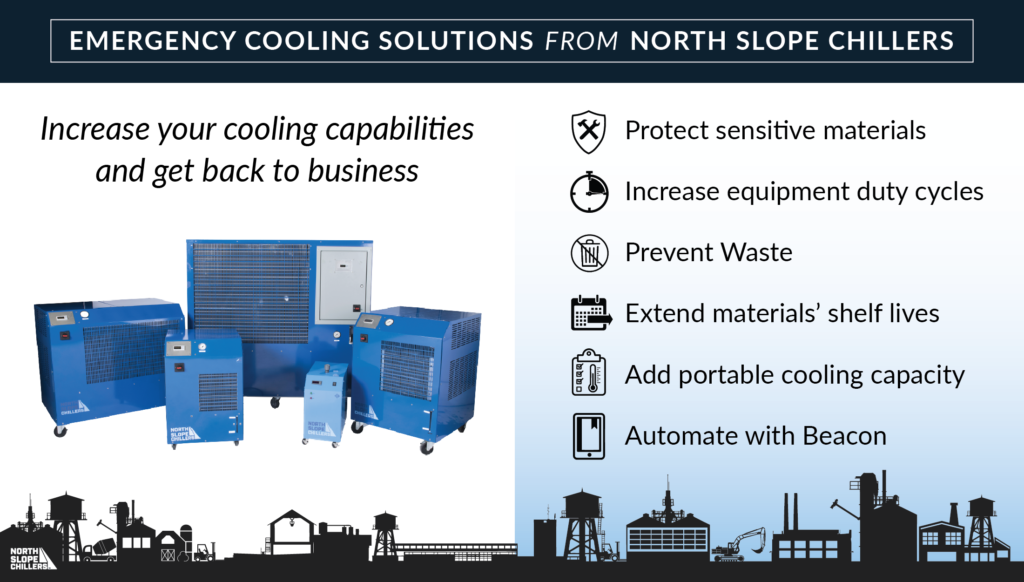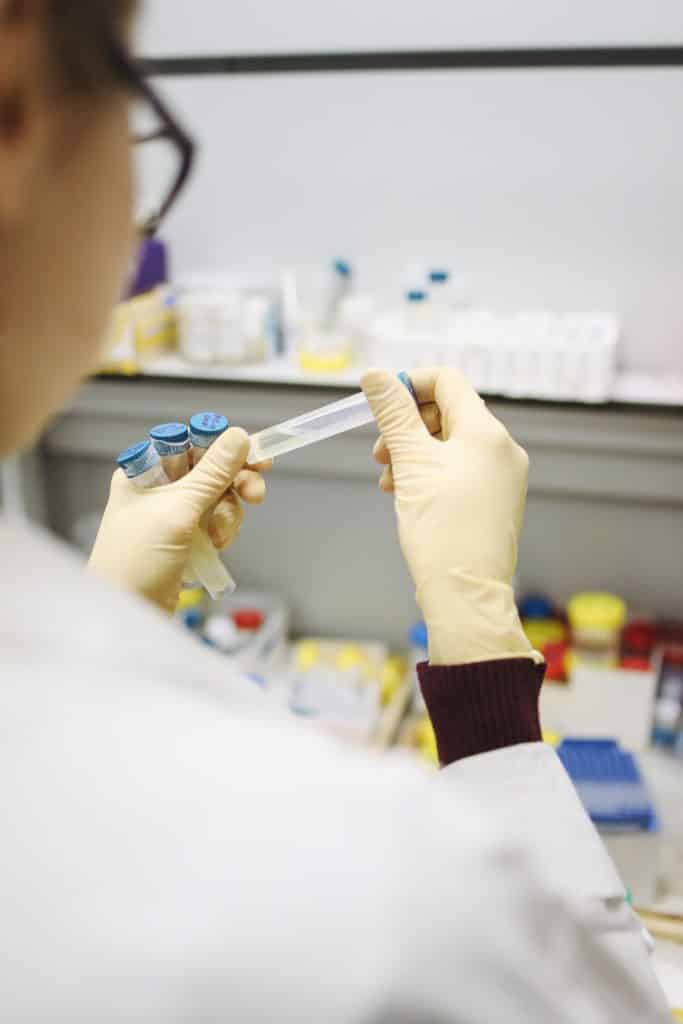What is a Vacuum Chamber?
Scientifically speaking, a vacuum is a space of such extremely low pressure that there is no matter present to affect the processes that occur there. Outside of the cold vacuum of space, a vacuum can be created right here on earth. Using a vacuum pump, air and other particles can be removed from a rigid space to create a man made vacuum chamber.
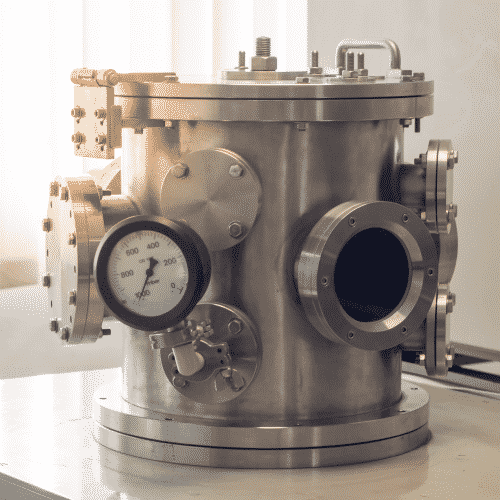
Vacuum chambers are made of extremely durable and rigid materials so they do not implode due to extremely low internal pressure. Common chamber materials include: glass, high density ceramics, acrylic, brass, aluminum, and different types of steel. These chambers are equipped with strong seals and gaskets to ensure no unwanted matter leaks back into the chamber. Because some materials can expand to several times their normal size within a vacuum chamber, the chamber needs to be considerably larger than the materials placed inside.
Industries that Use Vacuum Chambers
From small counter top chambers to the massive NASA testing chamber in Ohio, vacuum chambers are an extremely diverse family. They not only vary in size, but also in testing capabilities. Some vacuum chambers are programmed to simply recreate the same internal environment over and over again. Others are more adaptable and can be connected to various equipment that control changes in humidity, temperature, and other atmospheric conditions. Let’s take a closer look at the industries that utilize vacuum chamber technology.
Manufacturing
Vacuum chambers are an extremely versatile tool in the manufacturing community. They are used to conduct rigorous product testing to ensure materials are safe and flaw free before use. Any material that needs to be leak free and resistant to certain environmental conditions needs to be run through a vacuum testing phase.
Vacuum chambers are also helpful during the manufacturing process itself. Removing excess moisture and gas microbubbles is an essential step for a myriad of materials. These chambers are also used to deposit protective films and finishes.
Aerospace
Every bolt, panel, electrical component, composite fiber, and seat cushion on an air or space craft must meet extremely stringent safety standards. The structural integrity of these components can be examined in safe and controlled conditions with the help of vacuum chamber technology. Researchers can simulate every conceivable atmospheric or environmental condition to ensure that every piece of the craft is safe and reliable.
Food/Beverages
The goal of an efficient cold supply chain is to ensure that temperature sensitive products are protected from spoilage on their journey from farm to table. Vacuum chambers crucially remove excess moisture and gas that contaminants need in order to thrive. They also speed up the cooling, freezing, and drying process to protect the cellular integrity, taste, color, and appearance of the food we all enjoy.
Bio/Pharmaceutical
Vacuum chambers fill a wide range of needs in the biological and pharmaceutical industry. Drying, degassing, sterilizing, cooling, distilling, and crystallization are all used on a daily basis to create, preserve, study, and transport medicines, equipment, vaccines, and other important lab samples.
Vacuum Chamber Applications
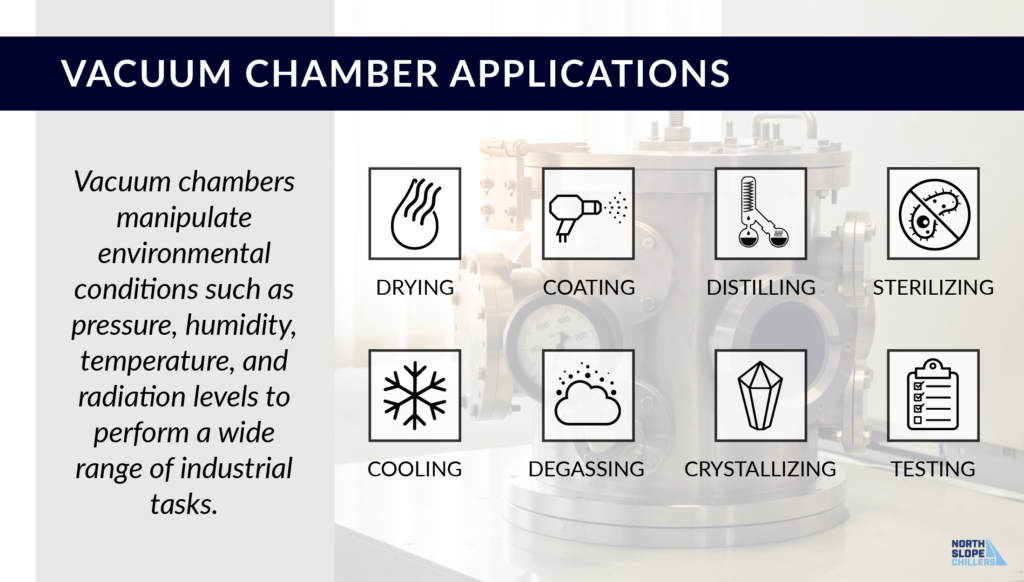
Drying
Removing moisture from a product can greatly increase its shelf life. Vacuum drying is extremely effective, and can remove more moisture than simple dehydrating. This drying can be done aggressively or gently depending upon the application.
Coating
Vacuum coating is the process of depositing a thin film or coating on a surface. Inside a chamber, a partial vacuum is created. Here, only a few ions and electrons remain inside the chamber to create electrical conductivity that attracts the film to the material’s surface.
Degassing
Vacuum degassing is the process of using a vacuum chamber to remove gas bubbles that are trapped within a substance. It is most commonly used to remove trapped air bubbles from resins, silicones, rubber compounds, and other epoxies.
Product Testing
Vacuum chambers create ideal conditions that mimic specific environmental and atmospheric conditions. Before materials and products can be used in extreme environments such as at high altitudes, deep ocean, or in space, they must be rigorously tested to ensure their safety. There are many conditions that can be manipulated for testing within a vacuum chamber including: humidity, temperature, pressure, atmospheric altitude, and even radiation levels. These chambers allow manufacturers to also test a material’s overall integrity including flexibility, structural deficiency, permeability, bond strength and more.
Crystallization
Some industries produce and transport chemicals and other materials in crystalline form because they are much more stable than liquids. Crystals form when a saturated solution (of liquid and a large amount of dissolved solids) leaves behind structural solid deposits. These crystals usually take time to form, from hours to millions of years. The modern industrial machine doesn’t have time to wait for mother nature’s crystallization process. Vacuum chambers are used to rapidly remove liquids from a saturated solution and create crystal deposits.
Distillation
Vacuum distillation removes and separates liquids from their surroundings so they can be used for other purposes. Liquids can be vaporized in the extremely low pressure of the chamber, extracted as a gas, and then re-condensed for further use.
Sterilization
Bacteria, viruses, fungi, and other contaminants need a certain environment in which to thrive. By removing all air pockets and moisture within a vacuum chamber, one also removes the possibility of microbial contamination. Vacuum chambers are used to sterilize a wide range of laboratory equipment and devices before they are packaged and distributed.
Cooling
Vacuum cooling is a rapid evaporative cooling process that is used for perishable products that are highly porous and have a naturally high water content. As the pressure within the chamber is lowered, a small amount of moisture from within the material is also released. As the water evaporates, heat is also lost. Vacuum cooling is an efficient and cost effective way to quickly cool flowers, fruits, and vegetables inside and outside to increase their shelf life.
North Slope Chillers Vacuum Cooling Solutions
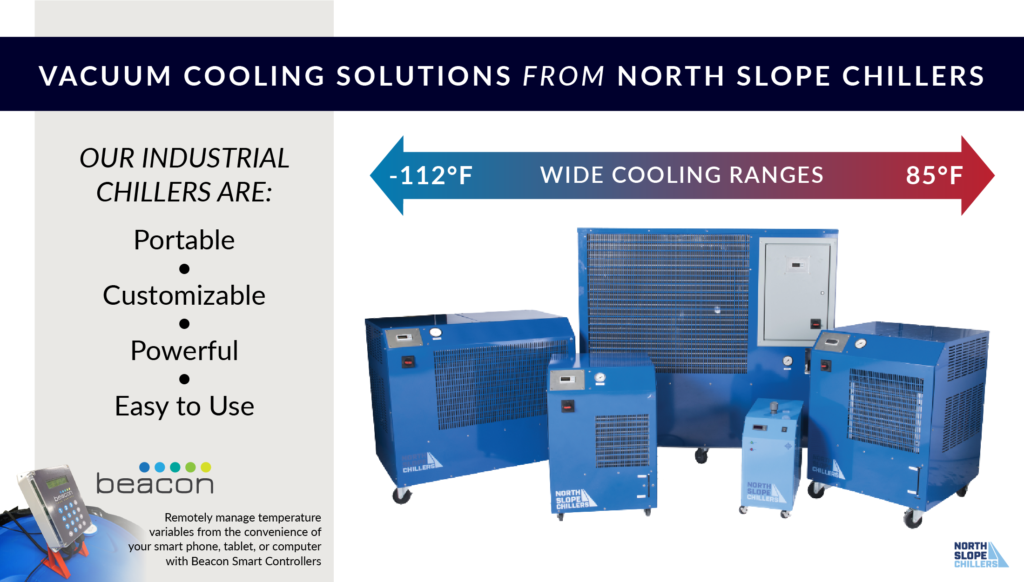
North Slope Chillers is proud to offer several levels of portable, compact, and powerful recirculated cooling. With 3 different performance levels available, we offer cooling ranges from 85°F all the way down to -112°F. Easy to install, remove, and relocate, you will be happy to have a fluid chiller unit that is painless and simple to use. Contact us today at (866) 826-2993 [email protected] to find the perfect cooling for your vacuum chamber needs.
